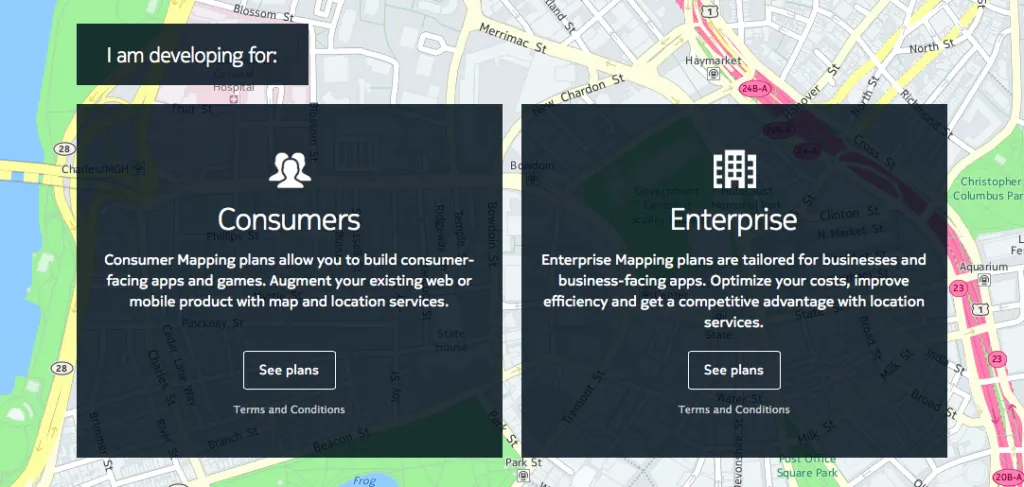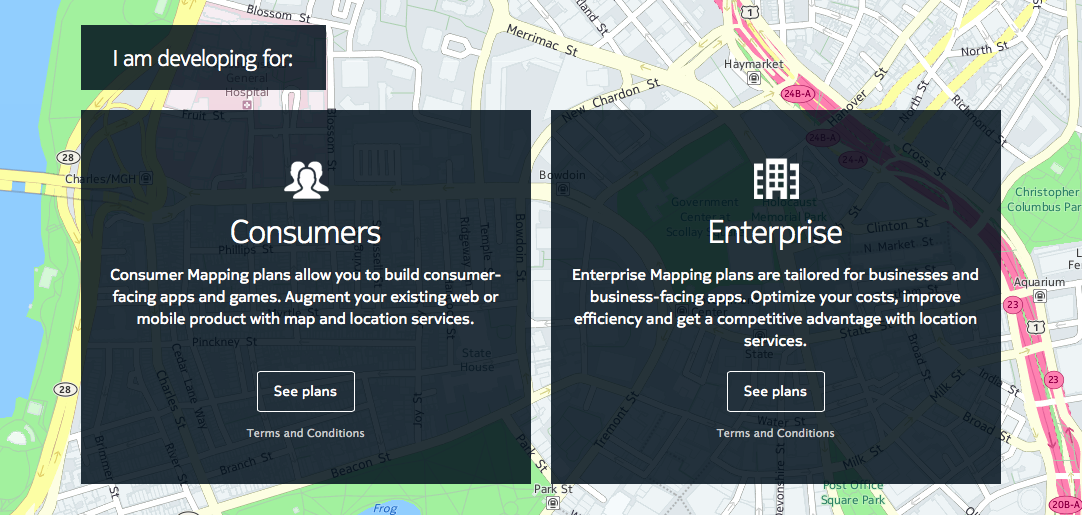
Nokia’s HERE maps opens a new self-service portal for developers
Nokia launched its new mapping self-service portal for their-party developers. Although HERE API offer a lot of great features, before now developers had to liaise directly with HERE’s sales team to procure a license to use it. For most of us it was a barrier which has nothing to do with being user-friendly.
With a new portal you get a simple access to HERE’s API and it’s features… simple but not necessarily cheap. After 90-days free trial the basic access costs $59 per month and it offer’s only a basic functionality including maps and road routing. If your app need over 150,000 monthly transactions or extra features including real-time traffic, street-view images or isoline routing you’ll need to choose from one of the higher plans. This solution is cool as it allow you to scale your apps but it’s a bit expensive when you compare it to Google Maps or CartoDB APIs.
Over the years Nokia’s mapping brand HERE (perviously known as Navteq) had its ups and downs. The new portal marks a milestone moment for the company which is still searching for its place in the industry. Will it be a huge success? I don’t know but giving an easy access to 3-rd party developers will be certainly helpful, as the API offers some really cool features e.g. check out this map with traffic isochrones.









